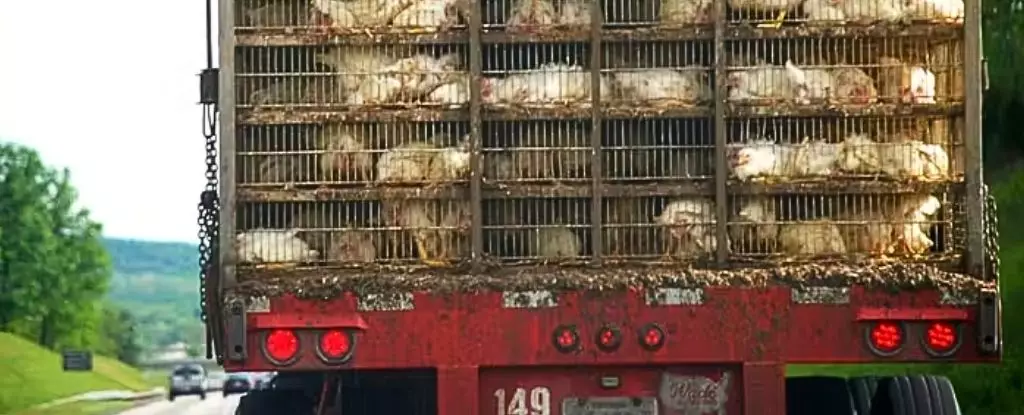Avian influenza, specifically the H5N1 virus, looms ominously on the global health landscape. While the media tends to amplify sensational stories of outbreaks, the true peril lies in the subtleties of how diseases can emerge and evolve. Since its first identified cases in humans in 2003, H5N1 has claimed approximately 50 percent of those infected—an alarmingly high mortality rate that dwarfs even the catastrophic 1918 flu pandemic. This pathogen serves as a stark reminder that complacency can allow a deadly virus to become a significant global threat.
The phrase “deadly silent” perfectly encapsulates the current state of H5N1. With reports indicating sporadic human infections primarily among those working closely with infected birds, the so-called “viral chatter” creates a code we should not ignore. It is the faint signal of an emerging crisis; if viruses were radio waves, the message from H5N1 is coded with ominous implications for public health.
The Evolution of a Pathogen
Understanding virulence is essential to our ability to respond to pandemics. H5N1, like many emerging viruses, takes a complicated and often drawn-out path toward enhanced transmissibility. The concept of “spillover” describes the process through which a pathogen adapts to infect a new host species, and the evolutionary journey it undergoes is fraught with challenges. Notably, for a pathogen to succeed in human hosts, it requires a specific matching of molecular “keys” to human “locks”—a highly improbable event that demands rare mutations.
However, the very nature of evolution can sometimes yield unexpected results, propelling a virus through unanticipated changes that can open the floodgates to widespread infection. The interplay between animal and human populations creates a petri dish of conditions ripe for the emergence of dangerous variants. As H5N1 continues to infect a diverse array of over 450 species, the potential for a catastrophic spillover event escalates dramatically. The delicate balance between risk and preparedness is one that must be actively managed.
The Role of Human Behavior
What is distressing yet profoundly enlightening is how the trajectory of infectious diseases, including avian influenza, has been sculpted by human behavior over millennia. From agricultural practices to urbanization, the decisions we make reverberate through ecosystems and influence which pathogens thrive. For instance, the large-scale industrial farming of poultry has fostered the perfect environment for H5N1 to spread. With the majority of outbreaks aligning closely with poultry production practices, it raises questions about the ethics of how we approach animal husbandry.
Governments and businesses alike bear the responsibility to reconsider their agricultural strategies. Rethinking food production methods could not only alleviate suffering for billions of animals but also minimize the risks of zoonotic diseases spiraling into pandemics. Protecting the population starts here—integrating animal welfare with public health concerns is no longer optional.
The Path Forward: Strategies for Prevention
To combat the looming threat of H5N1, we need a multi-pronged approach that begins at the individual level and expands to encompass international efforts. On a practical front, widespread vaccination against seasonal influenza remains non-negotiable in reducing the likelihood that different virus strains will intermingle. Individuals can contribute by ensuring they receive their vaccinations, thereby not only safeguarding their health but also limiting the chances for H5N1 and seasonal flu to combine forces.
Meanwhile, we must elevate dialogues around improving nutrition and sanitation, especially among the world’s most vulnerable populations. Adequate nutrition enhances immune resistance, while robust sanitation infrastructure ensures that exposure to new pathogens is kept to a minimum. When societies work toward these fundamental human rights, they are ultimately investing in their own health security.
The interconnectedness of our world means any failure to address H5N1 can have catastrophic repercussions beyond national borders. Prioritizing global health initiatives and reshaping how we interact with potential threats should be at the forefront of governmental policy.
Furthermore, the evolution of H5N1 might be inevitable, but our response does not have to be. By learning from past pandemics and ramping up prevention, we can shape a future where outbreaks are not only anticipated but effectively mitigated. Only through collective awareness and vigilance can we hope to avert another public health disaster, proving that while the threat of emerging infections like H5N1 is real, it is manageable with concerted action and informed strategies.

Leave a Reply